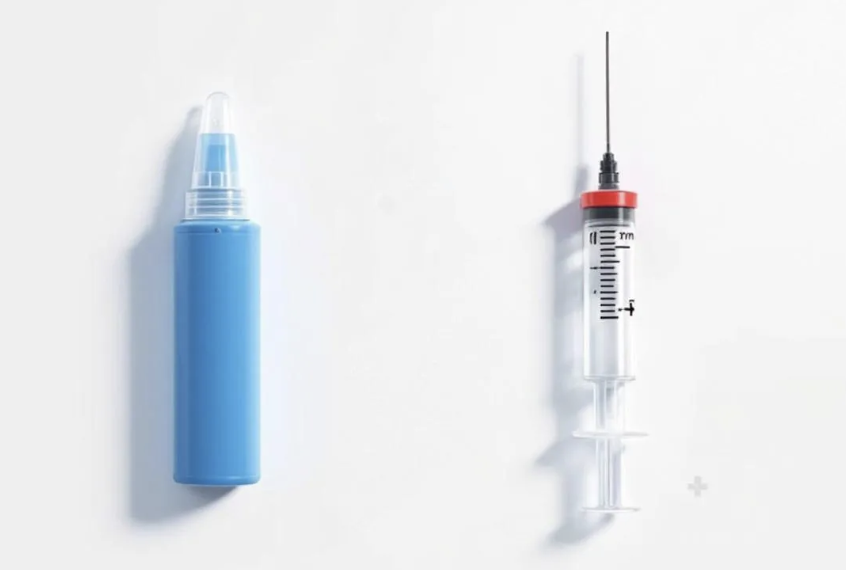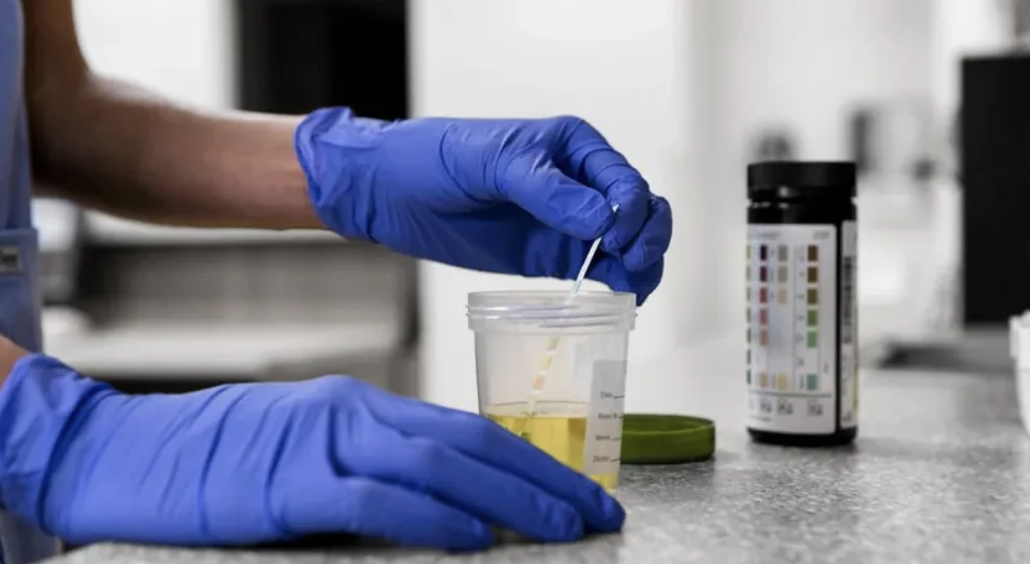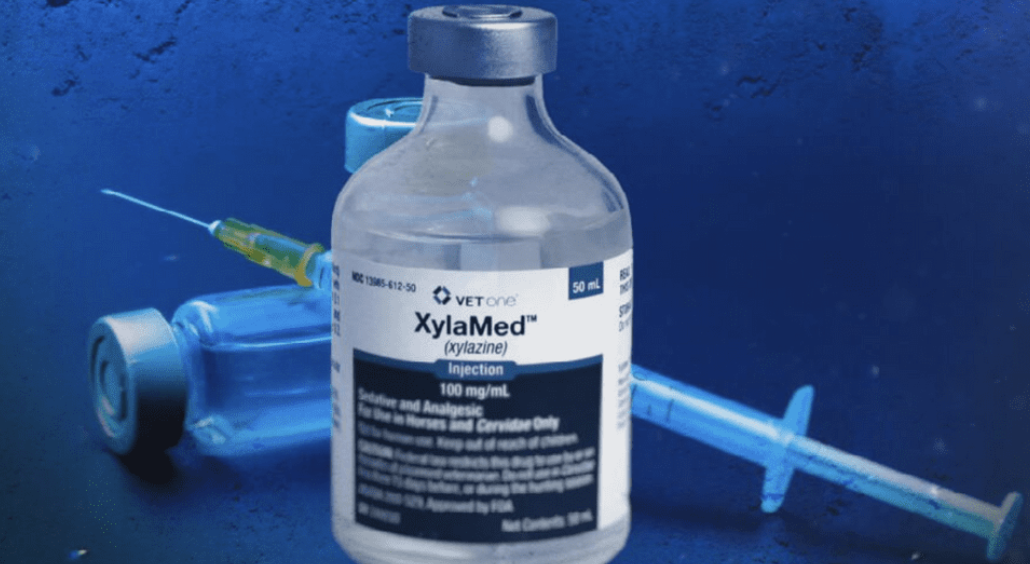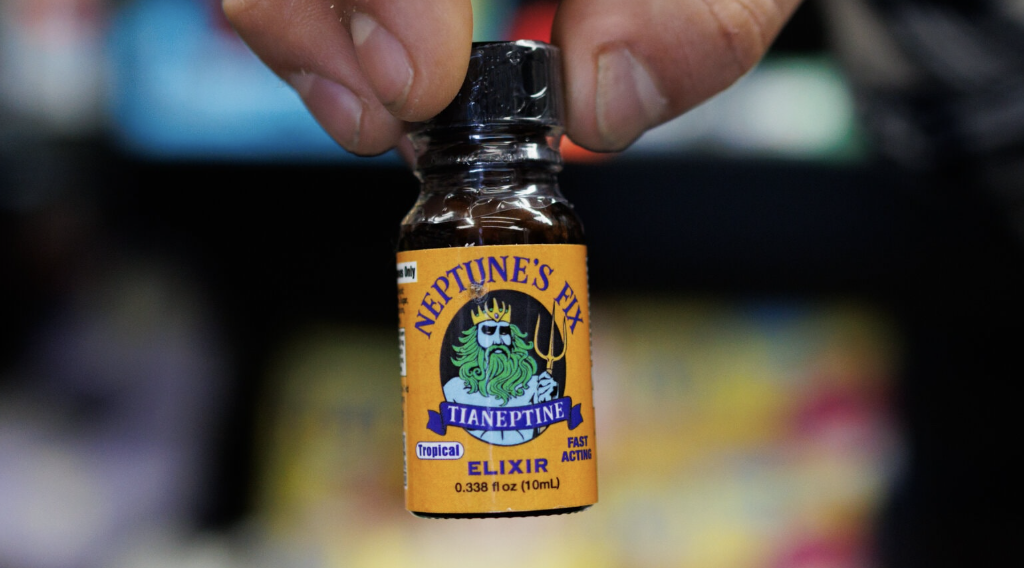In an opioid overdose emergency, knowing how to properly administer naloxone can save a life. This guide details the exact steps for using naloxone nasal spray and injections quickly and effectively. Discover essential instructions to act promptly and confidently.
Key Takeaways
- Naloxone can effectively reverse opioid overdoses via nasal spray or intramuscular injection, with the nasal spray being the preferred method for bystanders due to its ease of use.
- It is imperative to call emergency services immediately after administering naloxone, as its effects are temporary and cannot replace professional medical treatment.
- Recognizing signs of an opioid overdose early—such as unresponsiveness and slow breathing—is crucial for timely naloxone administration, which can significantly improve survival outcomes.
What is the correct way to give naloxone during an overdose?
Naloxone reverses opioid overdose within 2–3 minutes if administered correctly. In an opioid overdose emergency, the first crucial step is to stay calm and act quickly. Naloxone can be administered either as a nasal spray or via intramuscular injection, and both methods are effective in reversing the overdose effects.
For the nasal spray:
- Gently insert the nozzle into one nostril.
- Firmly press the plunger to release the dose.
- If there is no improvement within 2 to 3 minutes, administer a second dose.
- Be sure to call emergency services (911) before using naloxone, as professional medical help is crucial.
- Remain with the person for at least three hours or until medical help arrives to monitor their condition.
For the injection method, draw the medication into a syringe, select the injection site (thigh or upper arm), and administer the dose intramuscularly. Like the nasal spray, if there is no response within 2 to 3 minutes, a second dose may be needed. These steps can effectively reverse the life-threatening effects of an opioid overdose.
Nasal spray vs. injection: Which naloxone method is easier and faster?
Nasal spray is faster for bystanders; injection offers more control for medical responders. The choice between Narcan nasal spray and injectable naloxone often depends on the situation and the user’s expertise. For most bystanders, the nasal spray is the preferred option due to its ease of use and quick administration. Simply placing the nozzle in the patient’s nostril and pressing the plunger is straightforward and requires minimal training. Additionally, the 2mg nasal spray maintains higher blood levels of naloxone for up to two hours, making it highly effective in the critical moments following administration.
On the other hand, injectable naloxone hydrochloride provides more precise dosing and control, which can be crucial in a medical setting. The injection method, whether intramuscular or subcutaneous injection, allows healthcare professionals to administer the medication directly into the body, ensuring rapid absorption.
While the injection might be more intimidating for untrained individuals, it offers flexibility in dosing, which can be vital for severe opioid overdoses. Both methods are effective, but the nasal spray’s user-friendly nature makes it the go-to choice for immediate, layperson-administered responses, intranasal administration typically administered intranasally.
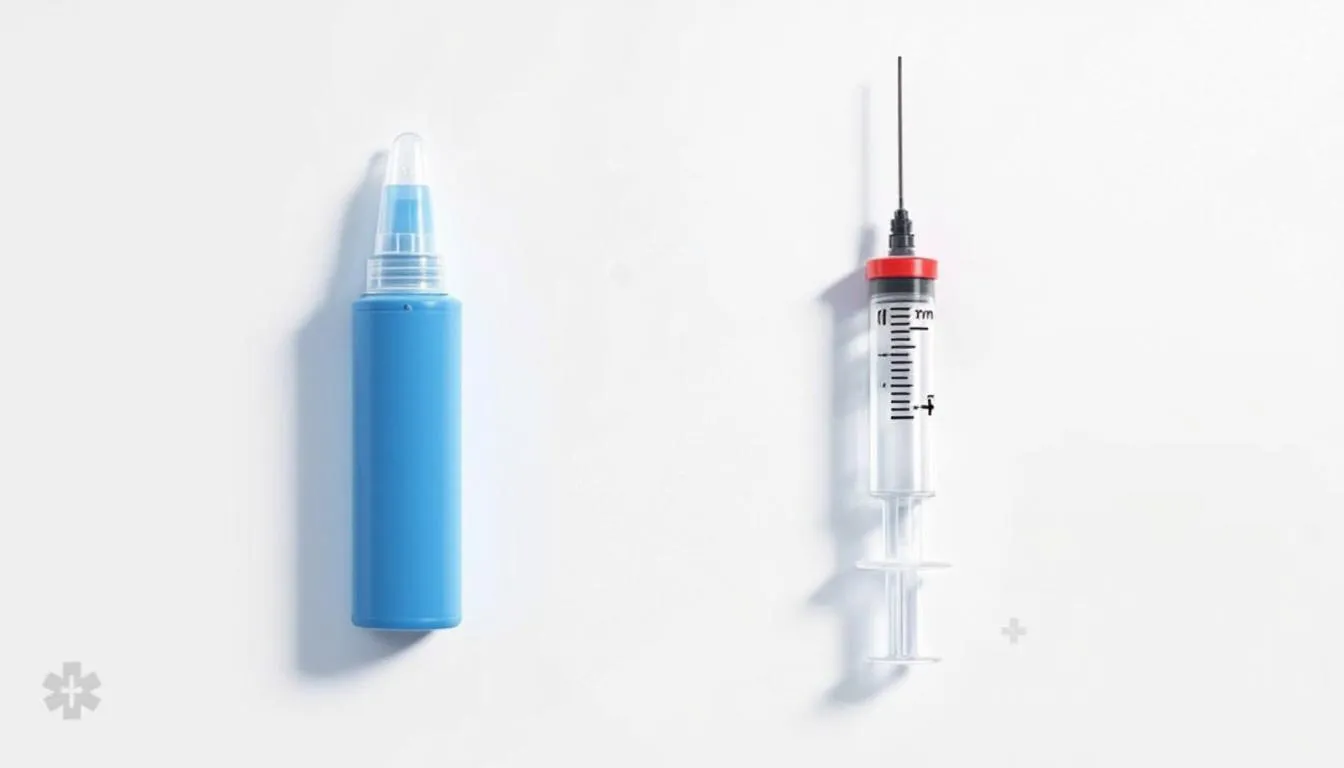
Step-by-step guide to administering naloxone
Administering naloxone involves a sequence of actions that must be followed to effectively reverse an opioid overdose. This guide will walk you through each step, ensuring you can act confidently in an emergency. Differentiating between the naloxone nasal spray and injection methods, you’ll learn the specifics of each administration route and the administration routes for naloxone.
Initially, check for signs of opioid overdose, call emergency services, and then administer naloxone. Following these steps in order can make the difference between life and death.
Check for signs of opioid overdose
Recognizing the signs of an opioid overdose is the first step in saving a life. Look for indicators such as unresponsiveness, slow or irregular breathing, and blue or purple coloration of the lips and nails. These symptoms suggest that the person’s body is not getting enough oxygen, which can quickly become fatal without intervention.
If you suspect someone is experiencing an opioid overdose, follow these steps:
- Try to wake them by shouting their name or gently shaking them.
- If they do not respond, act immediately.
- Identify the signs early to administer naloxone.
- Call for emergency help promptly to increase the chances of a positive outcome.
Call emergency services (911)
Naloxone can temporarily reverse an opioid overdose, but it is not a substitute for professional medical treatment. When dealing with a suspected overdose:
- Call emergency services immediately, as naloxone is a temporary measure until help arrives.
- When calling 911, describe the person’s condition using observable symptoms such as unresponsiveness and lack of breathing.
- Avoid using terms like ‘drugs’ or ‘overdose’ when describing the situation.
If you need to leave the person to call, follow these steps:
- Place them in the recovery position to keep their airway clear.
- Inform the dispatcher about any naloxone administered and its effects.
- Overcome the fear of legal repercussions to ensure the individual receives appropriate medical care.
Administer naloxone (nasal spray)
Using a naloxone nasal spray is straightforward and designed for ease of use in emergencies. Follow these steps:
- Remove the Narcan nasal spray from its packaging.
- Gently insert the nozzle into one nostril until your fingers are against the patient’s nose.
- Press the plunger firmly to release the dose into the nasal cavity.
This method is effective and requires minimal training, making it ideal for bystanders.
If the person does not respond within two to three minutes, administer a second dose in the other nostril. Continue to monitor the individual until emergency services arrive.
The use of 8mg intranasal naloxone hydrochloride has been approved, reflecting a trend toward higher dosing for opioid overdose treatment. This method’s simplicity and effectiveness make it a critical tool in overdose emergencies.
Administer naloxone (injection)
Administering naloxone via injection requires a bit more precision but is equally effective. Follow these steps:
- Draw the naloxone into a syringe from its vial.
- Select an injection site, typically the outer thigh or upper arm.
- Clean the area with an alcohol swab.
- Inject the medication intramuscularly, ensuring the needle goes into the muscle.
To use an autoinjector like Evzio:
- Place the device against the outer thigh.
- Press the button to release the dose. This can be done through clothing if necessary.
- Monitor the patient closely.
- If there is no response within 2 to 3 minutes, administer an additional dose.
The injection method offers more control over the higher dose and is often used in healthcare professional settings, including intramuscular injections, with a full dose using a prefilled syringe.
Perform rescue breathing or CPR if needed
Perform rescue breathing or CPR if the individual is not breathing while waiting for emergency services. Basic life support involves delivering oxygen to someone whose person’s breathing has stopped, which can be critical in preventing death. Ensure the airway is clear by checking for obstructions in the mouth before starting.
Give rescue breaths at a rate of one breath every five seconds if the person is not breathing. If the victim remains unresponsive and not breathing after naloxone is administered, CPR should be performed.
Rescue breathing can significantly impact survival chances in an opioid overdose situation and help prevent respiratory depression, especially when shallow breathing occurs.
Repeat dose if no response in 2–3 minutes
If there is no improvement within 2 to 3 minutes after administering naloxone, a second dose may be necessary. Administer the additional dose using the same method as the first. For nasal spray, use the other nostril. For injections, select a new injection site.
Monitor the individual closely and administer additional doses every 2 to 3 minutes if needed until emergency help arrives. Ensure the person regains consciousness and normal breathing to improve their chances of recovery.

How naloxone works in the body
Naloxone functions as an opioid antagonist, effectively attaching to opioid receptors to counteract and block the effects of opioids. This action rapidly reverses the effects of the overdose, restoring normal breathing within minutes if the individual’s breathing has slowed or stopped due to an opioid overdose.
The effects of naloxone typically last between 30 to 90 minutes, but many opioids can remain active in the body longer, necessitating further medical intervention. Naloxone is generally ineffective for overdoses involving non-opioid substances, which are often part of polysubstance abuse cases involving drugs like cocaine or benzodiazepines.
Individuals physically dependent on opioids may go into sudden opioid withdrawal when naloxone is administered, experiencing symptoms like nausea, sweating, and agitation.
When should naloxone be used?
Administer naloxone to anyone exhibiting signs of an opioid overdose or if an overdose is suspected. This includes situations where someone is unresponsive, has slow or irregular breathing, or shows blue or purple coloration of the lips and nails. It is critical to call emergency services immediately when naloxone is given, as its effects last only 30 to 90 minutes. If necessary, you can also administer narcan.
People experiencing a suboxone overdose or other potent opioid-related emergencies may require multiple doses of naloxone to fully reverse symptoms. Naloxone is ineffective on individuals without opioids in their system, meaning it won’t reverse opioid overdoses from other substances.
Family members and friends of individuals struggling with opioid addiction should have naloxone readily available and know how to use it in emergencies. Withdrawal symptoms may occur in opioid-dependent individuals after naloxone administration, but these are typically not life-threatening.
Who can give naloxone and where can you get it?
Naloxone can be administered by bystanders, family members, or trained personnel. Many pharmacies stock naloxone, and in some regions, it is available without a prescription. Community-based distribution programs and local health departments often provide naloxone free of charge. Training for naloxone administration is available for friends and family members of individuals at risk for opioid overdose.
First responders such as police and emergency medical technicians, along with emergency personnel and medical professionals, are typically trained to administer naloxone. In some states, healthcare providers can prescribe naloxone alongside opioids to reduce the risk of overdose. Ensuring that naloxone is readily available and that individuals are trained in its use can significantly impact the outcomes of opioid overdose emergencies.
Does naloxone have any side effects or risks?
Naloxone can cause withdrawal symptoms in opioid-dependent individuals, leading to discomfort such as body aches, fever, and sweating. Common side effects of naloxone include headache and joint or muscle pain. Some patients may experience less common side effects like dizziness, stomach pain, or agitation after receiving naloxone.
More severe side effects, although less frequent, can include seizures and ongoing trouble breathing. It is advised to seek medical attention if side effects become bothersome or persist after naloxone administration.
It’s important to note that naloxone is non-addictive and safe even if opioids are not present in the body.
Storage and expiration: How to keep naloxone ready for emergencies
Store naloxone by following these guidelines:
- Keep it in its original packaging.
- Protect it from light.
- Maintain at room temperature between 59°F to 77°F (15°C to 25°C).
- Store it near emergency equipment, such as AEDs and first-aid kits.
It is important to keep naloxone in its original packaging until it’s ready to be used.
Naloxone storage and disposal guidelines:
- Must not be frozen or exposed to temperatures exceeding 104°F (40°C).
- Unused naloxone should be disposed of through local pharmacies or medicine take-back programs.
- Expired naloxone, if stored correctly, may still be effective and can be donated to local syringe services programs.
The FDA has extended the shelf life of Narcan® nasal spray, which is FDA approved, from two years to three years.
Common mistakes to avoid when giving naloxone
Avoiding common mistakes when administering naloxone can be the difference between life and death. A critical error is delaying the administration of naloxone. In an opioid overdose, every second is crucial, and waiting too long can worsen the situation.
Another common mistake is failing to call emergency services (911) after giving naloxone. While the life saving medication can temporarily reverse the overdose, professional emergency medical help is essential.
It’s also important to ensure the correct dosing and proper positioning of the naloxone nasal spray. Misidentifying symptoms can lead to inappropriate naloxone use, although it has no harmful effects if given to someone not experiencing an opioid overdose.
Monitoring the person closely after administration is vital to ensure they regain consciousness and normal breathing. By being aware of these key safety considerations and potential pitfalls, you can effectively use naloxone to save lives.
Training and resources for learning naloxone use
Training to administer naloxone is widely available and often includes interactive courses that teach recognizing and responding to an opioid overdose effectively. Resources include:
- Videos demonstrating the steps to save a life during an opioid poisoning scenario
- Training manuals
- Quizzes These tools are valuable to enhance understanding and preparedness.
Certified training programs, community harm reduction services, and manufacturer guides like those on Narcan.com and Evzio.com provide comprehensive information on naloxone use. Train-the-trainer programs equip individuals with the skills to educate others about naloxone use.
These resources include:
- Certified training programs
- Community harm reduction services
- Manufacturer guides (e.g., Narcan.com and Evzio.com)
- Train-the-trainer programs to educate others
These resources are continually updated to reflect the changing landscape of substance use and overdoses, ensuring you are prepared to respond effectively.

Bottom Line: How to properly administer naloxone?
Understanding how to properly administer naloxone can save lives in opioid overdose emergencies. By recognizing the signs of an overdose, calling emergency services, and administering naloxone correctly, you can make a critical difference. Whether using the nasal spray or injection method, the key is to act quickly and follow the steps outlined in this guide.
Naloxone is a powerful tool in combating the opioid crisis, but it is not a standalone solution. Continuous education, availability of naloxone, and support from community programs are essential in reducing opioid-related deaths. By staying informed and prepared, you can help reverse the effects of opioid overdoses and contribute to saving lives.
FAQs about naloxone administration
Can naloxone be administered by anyone?
Yes, naloxone can be administered by bystanders, family members, or trained personnel, and many programs provide training to ensure proper usage. This accessibility is crucial for effectively responding to opioid overdoses.
Where can I get naloxone?
Naloxone can be obtained at many pharmacies without a prescription, as well as through community-based distribution programs and local health departments. It is advisable to check your local resources for availability.
Are there different types of naloxone?
Indeed, naloxone is available in two primary forms: a nasal spray, such as Narcan, and an injectable form, including Evzio and generic naloxone. Both forms are effective in reversing opioid overdoses, providing crucial options for administration.
What should I do if the first dose of naloxone doesn't work?
If the first dose of naloxone does not work within 2 to 3 minutes, administer an additional dose and closely monitor the individual until emergency assistance arrives.
Can naloxone cause withdrawal symptoms?
Yes, naloxone can lead to withdrawal symptoms in opioid-dependent individuals, including body aches, fever, and sweating, although these symptoms are generally not life-threatening.


